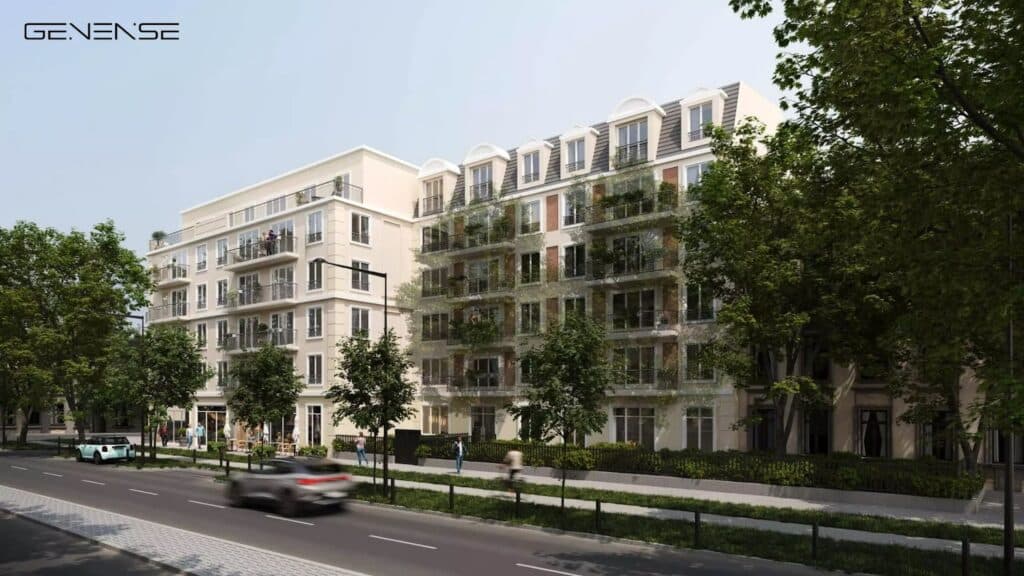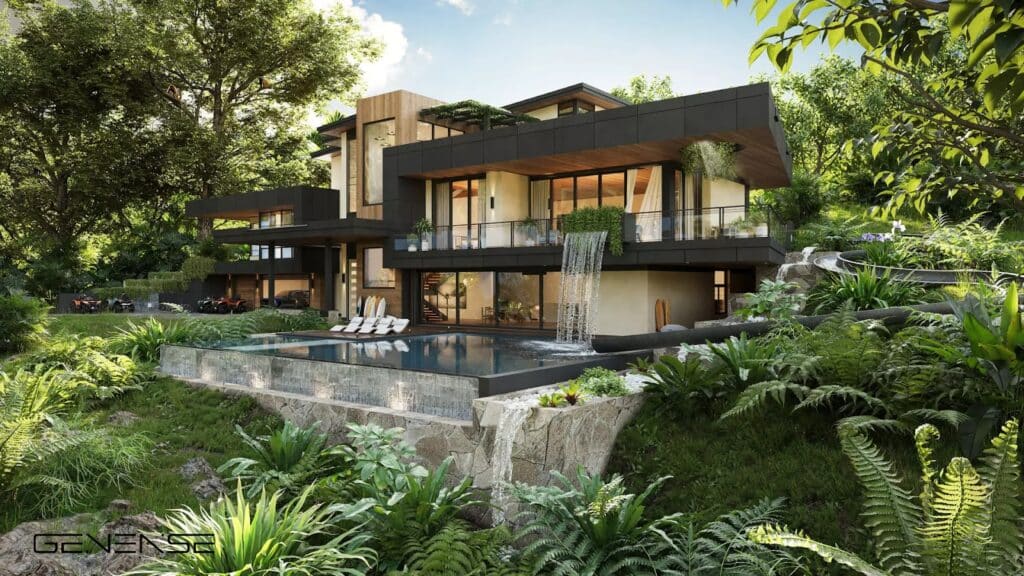
Example of a 3D exterior rendering of Le Suffren Hotel by Genense Studio
In an industry where perception drives decision-making, delivering visual clarity is critical. The ability to communicate intent before construction begins can define the trajectory of the project. That’s precisely where 3D exterior rendering services prove indispensable.
A well-crafted render doesn’t simply replicate architecture — it translates it into a persuasive visual narrative. These images are precision tools for conveying spatial intent, atmosphere, and market potential. In the property market, this clarity can secure funding, increase pre-sales, and streamline approval processes.
What is 3D Exterior Rendering?
3D exterior rendering is the process of creating lifelike digital images that represent architectural designs before construction begins. These visuals are developed using advanced software that simulates materials, lighting, shadows, landscaping, and surrounding context with high precision. Unlike conceptual sketches or elevation drawings, renders provide a comprehensive, photorealistic view of a structure’s external appearance, often indistinguishable from real photography.
In professional workflows, these visualizations support architectural reviews, client approvals, public presentations, and marketing campaigns. By enabling real-time iteration, 3D exterior rendering helps project teams explore material combinations, test facade configurations, and evaluate spatial relationships early in the design phase. This level of clarity reduces rework, shortens approval cycles, and builds stronger consensus among all stakeholders.
Bridging Concept and Confidence
Before a single foundation is poured, stakeholders seek certainty. Developers want to secure early buyers, municipalities need accurate visual references for planning approvals, and agents aim to promote a lifestyle. Static floor plans and technical drawings fall short. A photorealistic 3D render speaks directly to human emotion and logic, merging form with function.
The success of architectural communication increasingly relies on how convincingly a future space can be portrayed. Without waiting for costly prototypes or mock-ups, decision-makers gain access to:
- Hyperrealistic visuals of unbuilt properties
- Contextual integration within the planned environment
- Real-time feedback for design modifications
- Alignment between architectural intent and marketing output
By replacing ambiguity with visual certainty, marketing teams gain a powerful tool for influencing purchasing behavior.

Example of a 3D exterior rendering of Oasis En La Selva for Kelly & Stone Architects by Genense Studio
Enhancing Marketing Efficiency and Reach
3D visualization streamlines content creation for every stage of a project’s promotional lifecycle. From investor brochures to billboard campaigns, the same base render can be adapted for multiple platforms, including digital walkthroughs, motion graphics, and interactive web previews.
Moreover, consistency in visual assets improves brand recognition across all touchpoints. A cohesive rendering package aligned with architectural blueprints ensures that agencies, investors, and buyers view the same project—regardless of format.
When implemented strategically, 3D exterior visualization delivers a strong return on investment through:
- Reduced production costs compared to traditional photo shoots
- Accelerated design approval workflows
- Enhanced engagement on listing platforms and social media
- Greater adaptability for international or remote stakeholders
The flexibility of render-based content significantly shortens time-to-market while improving message precision.
Precision Tailored to Audience
Different stakeholders interpret design data through different lenses. Engineers analyze structure. Agents consider buyer appeal. Municipal boards prioritize zoning compliance. A singular render, tailored per use case, helps each group focus on what matters most to them.
In B2B workflows, renders aren’t just decorative — they are diagnostic. Design studios use them for QA visualization before client presentations. Developers adjust cladding and facade treatments based on lighting simulations. Realtors pre-sell units using sun-tracking animations for balcony orientation advantages.
Instead of relying on universal templates, the most successful campaigns segment render output by goal. This approach allows marketing to serve technical, aesthetic, and emotional objectives simultaneously.
From Pitch Deck to Property Sale
The decision to invest in 3D rendering is a strategic one. While the upfront effort demands attention to detail — from CAD accuracy to material calibration — the long-term advantages outweigh the initial input. Visuals produced today will continue to serve branding, documentation, and compliance roles across the entire property lifecycle.
Architectural visualization, when executed to high standards, does more than illustrate — it persuades. In markets saturated with options, the ability to distinguish a development through atmospheric lighting, accurate landscaping, and humanized composition creates a competitive edge.
For real estate professionals and design teams committed to precision, impact, and efficiency, integrating rendering into the core of project marketing is no longer optional — it’s fundamental.
- 0shares
- Facebook0
- Pinterest0
- Twitter0
- Reddit0



